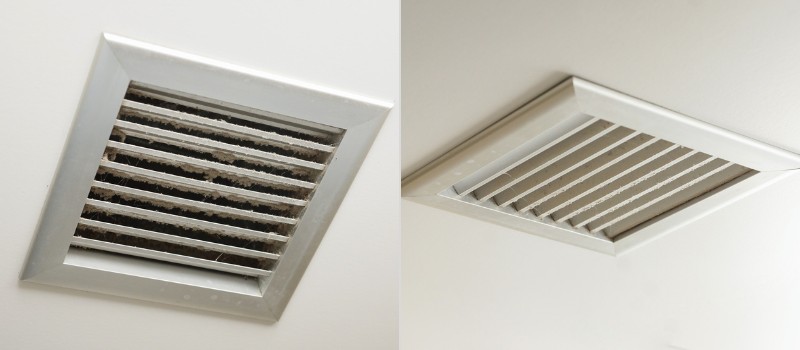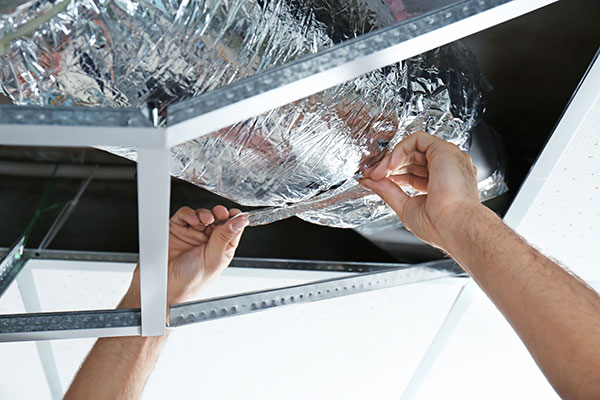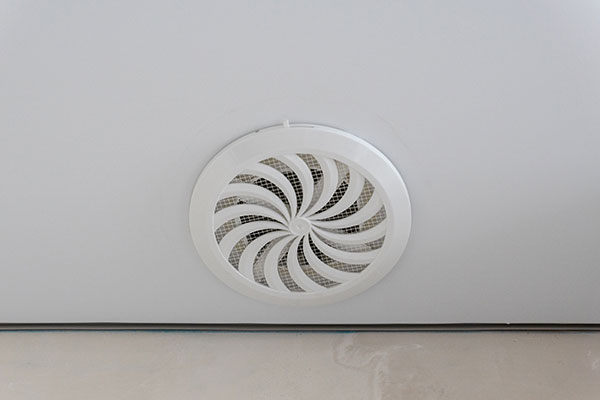A duct booster fan is an add on that helps to propel air through the ducts in your home. They do not fix underlying issues but, as the name suggests, they work to boost the air flow to a specific room.

They are not long-term fixes but can be used effectively as short-term solutions.
Duct booster fans support your HVAC system. HVAC stands for heating, ventilation, and air-conditioning.
If your rooms are heating unevenly, you may wish to consider purchasing a duct booster fan. Now, regarding your question if duct booster fans really work:
Duct booster fans do work, but they are not a proper fix for issues with your ductwork.
Let’s discuss the above statement in more detail below.
There are 3 main types of duct booster fans – duct fan boosters, inline, and register.
The Types of Duct Fan Boosters
Duct fan boosters
These are commonly found in home HVAC systems that need a slight boost. They are often found inside central heating, air conditioning, bathroom fans, and range hoods.
A 12-inch version has an air flow of up to 800 CFM of air flow power. They require a lot less energy to operate than inline or register fans.
Inline booster fan
These fans sit inside of your air ducts. They turn on and off as you require them to be used and are best suited to homes or buildings with a large network of air ducts. They tend to be installed in vents that are at a distance from the blowing unit of your HVAC system.
They are used to add an element of mechanical pull to the ducts. They pull air through the entire air duct system and ensure that air is expelled at all open vents, rather than just the ones close to the blowing unit.
These booster fans operate very quietly but they are incredibly efficient. They are intended to replace a section of the air ducts and tend to get wired into the furnace. If you do not have the funds readily available to replace the entire duct network, inline booster fans are a good option.
They tend to cost between $30 and $200, but you will also need to pay an installation fee unless you have an electrician friend.
When purchasing an inline booster fan, you need to check the size of your air ducts to ensure you choose one that fits. The section of duct that is to be replaced should be exposed before you install the inline booster fan.
Common complaints about inline booster fans include the fact that they need hardwiring or an electrical outlet, meaning that they need to be installed and removed by a qualified professional.
They also need to have a relay system back to the HVAC system and the HVAC duct has to be exposed during installation.
Register fan
Instead of installing the fan inside the duct, register fans are directly installed into the wall of the desired room. This is easier to install but is only effective in one targeted area.
The register fan forces a pressure differential to develop. This in turn pulls more air out of the vent. Register fans produce the same effect as inline booster fans but through a different method.
This is much cheaper than inline booster fans, costing around $30 to $80 per fan. Pricier models come with additional features such as a digital thermostat, remote controls, and multiple speed settings.
Common complaints regarding register fans are that they are noisy when in operation and they are very prone to breaking or just not functioning correctly.
They also require an electrical cord to operate, and could further restrict the airflow through the vents as they block the vent.
Things to Consider
How to notice uneven heating in your home
Check the temperature in varying spots around your home. If you notice any spots of hot and cold air in one room, this could be a candidate for a register fan.
If different rooms are different temperatures or different floors, this could also be a sign you need to look at your air ducts. For these issues, inline booster fans may be more useful.
How to decide which to use
Inline fans are better suited to complicated and long systems of air ducts, whereas register fans are better for smaller duct systems.
Inline booster fans are best for commercial buildings. This is because the air ducts are huge and complex, meaning that register fans cannot create the desired results.
They are also non-invasive as they sit inside the pre-existing air ducts. This means that they do not interfere with the functioning of the building, but help to make the air ducts perform better.
What else could cause your home to heat unevenly?
If your air filters are clogged or dirty this could prevent a sufficient quantity of air from leaving the HVAC system.
You should also check your air vents, dampers, and return air registers for blockages, damage, and closures.
Air ducts that are not the correct size could fit improperly and this could cause an uneven stream of air through the HVAC system or leakages.
You should also check the window and doors for air leaks. You should clean your HVAC system regularly, in particular the coil and blower wheel sections. If these are left to get dirty or dust is allowed to build up on them, the HVAC system could break.
We will always recommend calling out a qualified HVAC technician to check for any issues with your ductwork and the system as a whole.
What causes condensation?
Condensation is caused by a temperature gradient between two opposing substances. In the case of ductwork, cool air going through warm areas can cause condensation to form inside the duct system.
This can then cause mildew and mold to form on your pipes, ceilings, and walls. Proper insulation can prevent this condensation from forming and save you a lot of money in the long run.
Is insulating ductwork worth it?
In short, yes. The ducts are commonly made from sheet metal or fiberglass but can be made of other materials too.
Leaking ducts can ramp up your heating bills by hundreds of dollars every year. Experts estimate that uninsulated ductwork can cause between 10% and 30% of your energy to be lost.
This is because they emit heated air into spaces it is not designed to be released into. This can easily be prevented by insulating the exposed ducts. Insulation will not only keep your heating bills down but they will also prevent against leaks, condensation buildup, and temperature changes.
What are the types of duct insulation?
There are 2 main types of insulation for ductwork. The most common is fiberglass, but there is a new type of insulation known as Reflectix – a duct wrap.
Fiberglass is easy to install and replace, cheap to purchase, and absorbs noise. It does need regular checking to ensure that water is not being absorbed into the insulation material. It has an R-value of 3.1-3.4.
Reflectix is efficient and stable, as well as being very lightweight. There are no issues with water absorption that there are with fiberglass insulation. It consists of foil faces on the exterior, then layers of polyethylene which house bubble packs in the center. If installed correctly, Reflectix has an R-value of 5.6. 
The R-value is a measure of how well the insulation resists the conductive flow of heat – the thermal resistance of a material.
Summary
Duct booster fans do work, but they are not a proper fix for issues with your ductwork.
If you are having troubles, duct booster fans will work to rectify the problem in the short term, but issues are usually indicative of larger problems with the entire system of air ducts.
We suggest getting an HVAC technician out to check your ductwork if the problem does not get better with the addition of booster fans, or if it continues to get worse.
We also recommend insulating all exposed ductwork to save money.
Related Posts
- Comparison of HardieBacker Cement Board vs Plywood For Tiling Projects
- 6 Great Alternatives to HardieBacker Cement Board
- Comparison of WonderBoard vs GoBoard Used as Tile Backer Boards
- How Much Does it Cost to Furnish a House – Living Room,Bedroom,Kitchen etc
- 5 Benefits of Spray Foam Insulation During Summer
- Here are Some Plumbing Installation Tips For your New Home

Leave a Reply